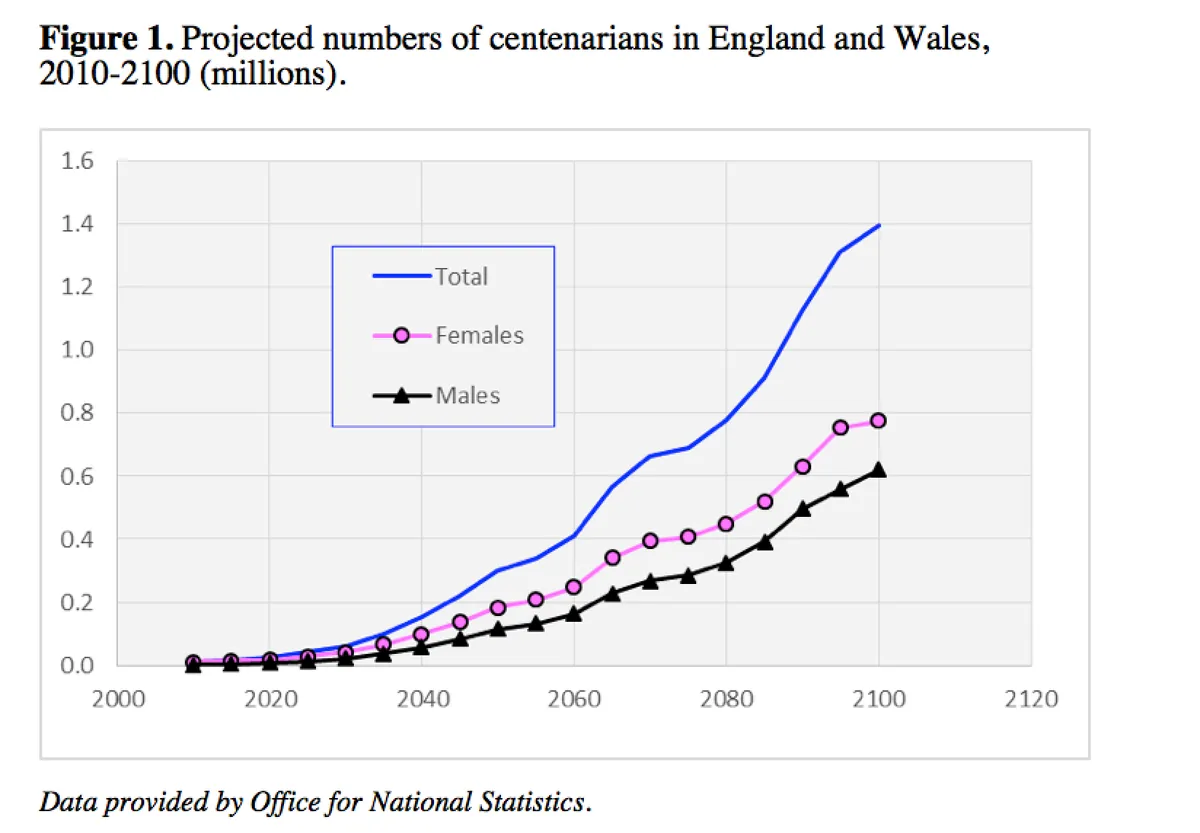Centenarian Population in England and Wales Declines for First Time Since Pandemic
The number of people aged 100 or above in England and Wales has decreased for the first time since 2018, reflecting a post-pandemic drop in life expectancy and demographic shifts.

For the first time since the COVID-19 pandemic, the number of centenarians in England and Wales has experienced a decline. According to recent data from the Office for National Statistics (ONS), the population of individuals aged 100 or above decreased by 0.5% in 2023, marking a significant shift in demographic trends.
This reduction in centenarians is attributed to several factors, including the impact of the pandemic on life expectancy and healthcare access. Since 2019, life expectancy has fallen by 38 weeks for men and 23 weeks for women on average. Additionally, the gradual passing of the post-World War I baby boom generation has contributed to this decline.

The current count of 14,850 centenarians in England and Wales represents a notable change from previous years. This figure is particularly striking when compared to historical data. In 2002, there were only 6,920 people aged 100 and above in these regions, less than half the current total. This long-term increase highlights the overall trend of growing longevity, despite recent setbacks.
The study of centenarians has become increasingly important in the field of geroscience, which aims to understand the biological mechanisms of aging. Research has shown that centenarians often experience a "compression of morbidity," where serious illness is concentrated in a shorter period at the very end of life. This phenomenon, along with genetic factors and lifestyle choices, contributes to their exceptional longevity.
Gender disparity remains evident among centenarians, with women outnumbering men 4.5 to 1 in this age group. This aligns with global trends, where women consistently demonstrate higher life expectancy.
The slowdown in population growth is not limited to centenarians. The number of nonagenarians (those aged 90-99) grew by just 0.2% to 551,758 last year, a significant deceleration from the 2.1% rise observed in 2022.
"We know that over the last couple of years or so overall life expectancy is starting to flatten out. That's partly driven by Covid but also a whole range of other health and health inequality issues. In a sense, it's not surprising that the numbers of centenarians are not increasing."
Concerns have been raised about government policies affecting the older population. Charities have warned that the current administration's decision to reduce winter fuel payments for millions of pensioners could put vulnerable elderly individuals at risk.
As the global population ages, the number of centenarians worldwide is projected to reach nearly 3.7 million by 2050. This demographic shift presents both challenges and opportunities for societies to adapt to the needs of an increasingly older population.
The study of centenarians continues to yield valuable insights into the factors contributing to exceptional longevity. Genetic studies have identified genes associated with longevity, such as FOXO3A and APOE, while lifestyle factors like moderate eating, regular exercise, and strong social connections are often cited by centenarians as key to their long lives.
As we look to the future, the United Nations estimates that by 2100, there could be over 25 million centenarians globally. This projection underscores the importance of continued research and policy development to support healthy aging and quality of life for the oldest members of our societies.


































